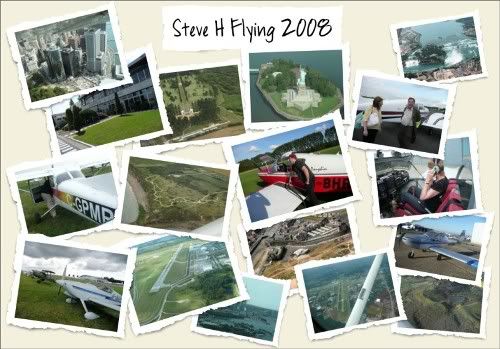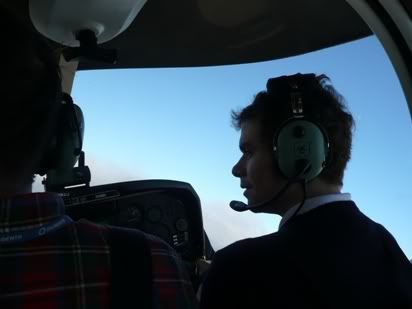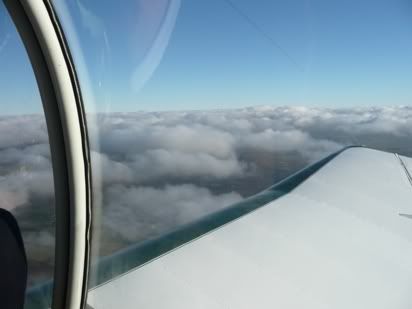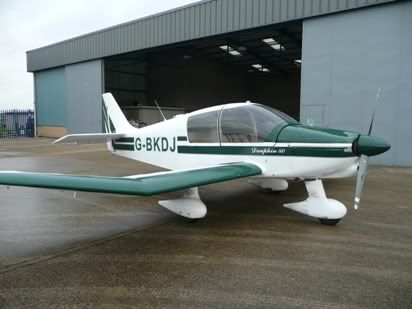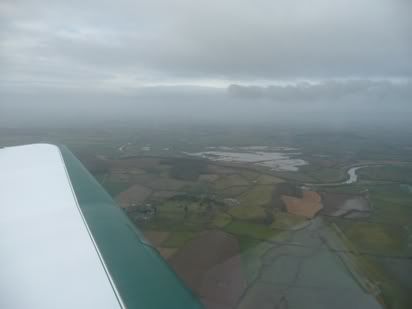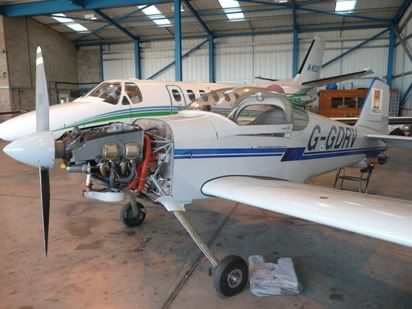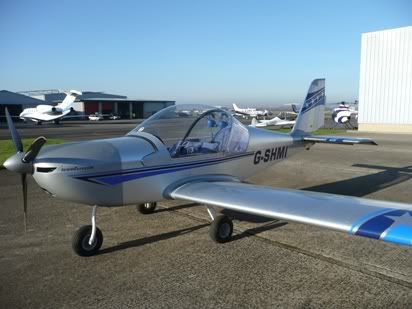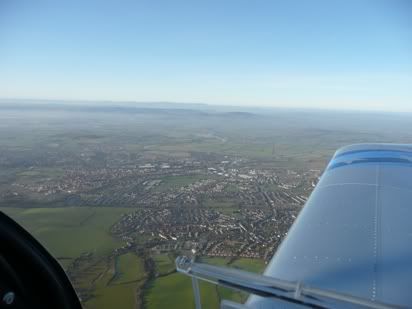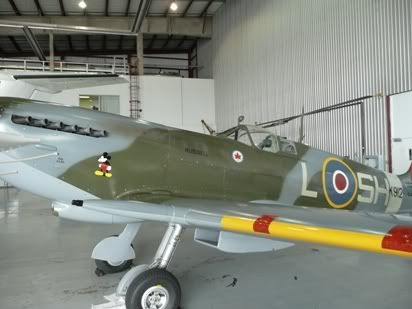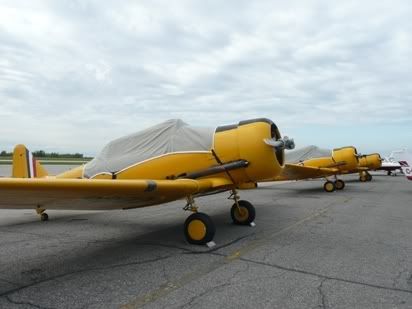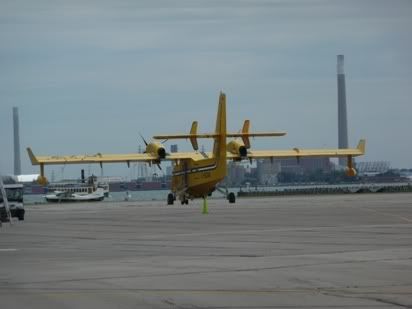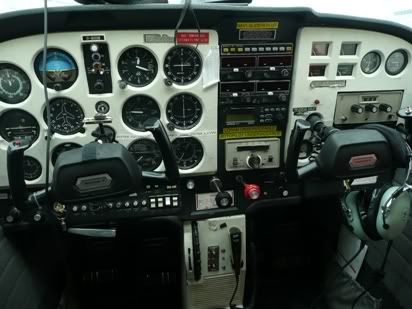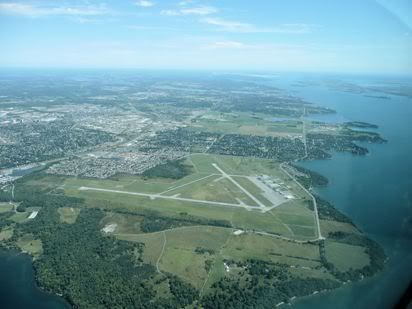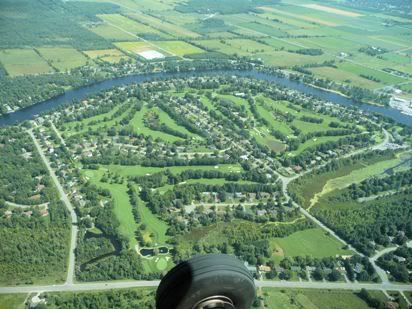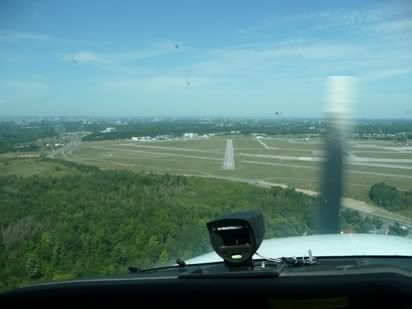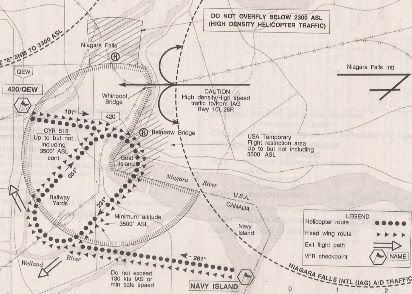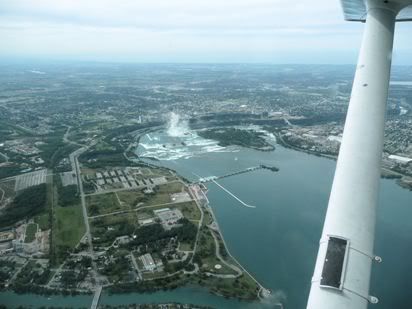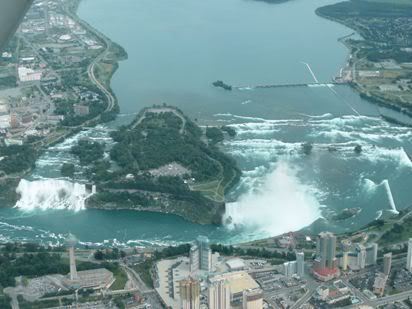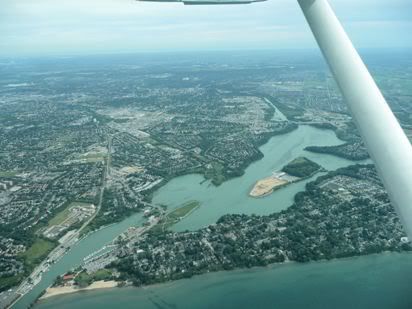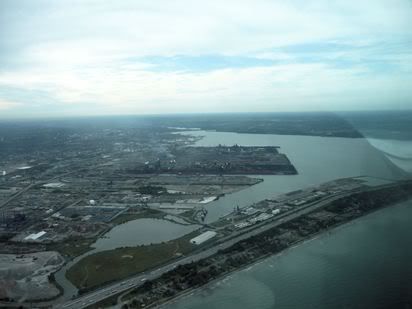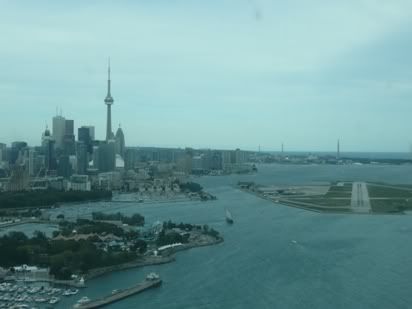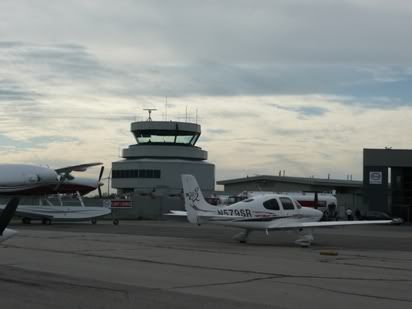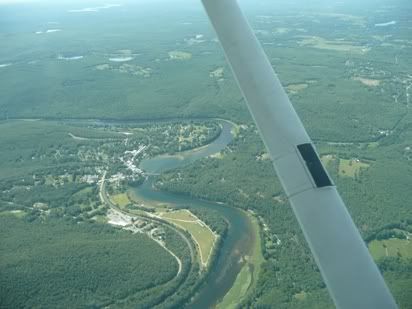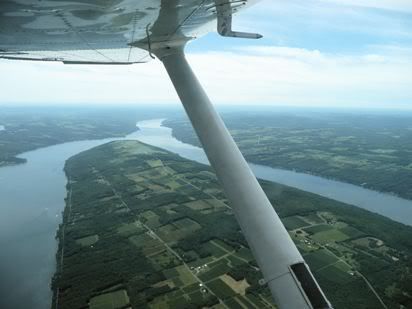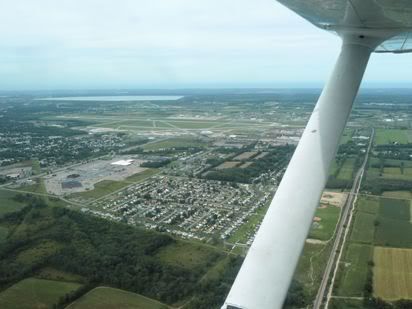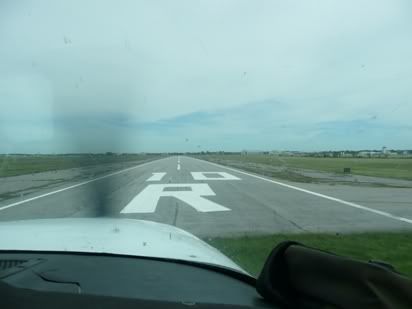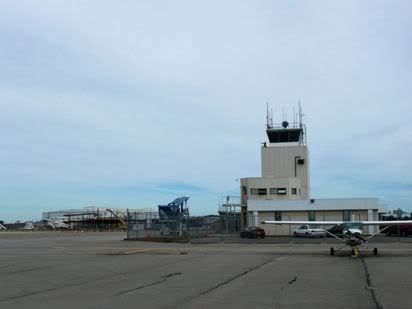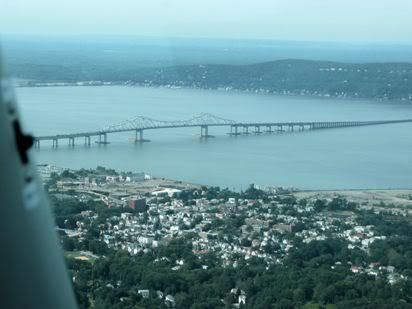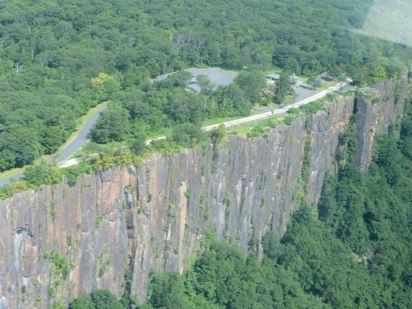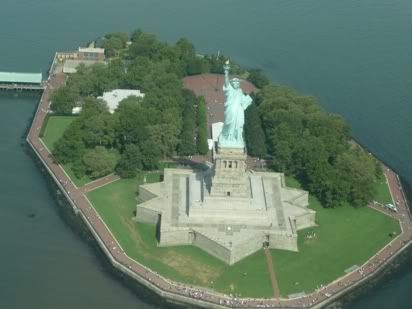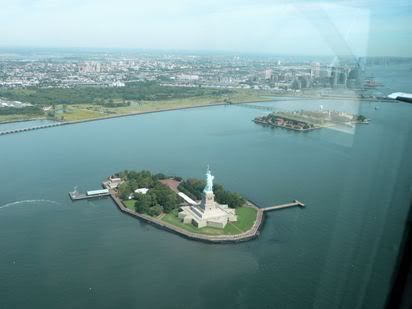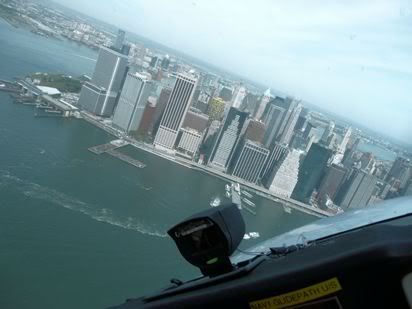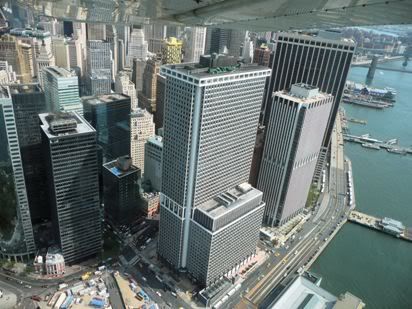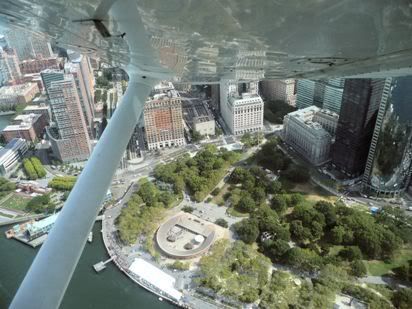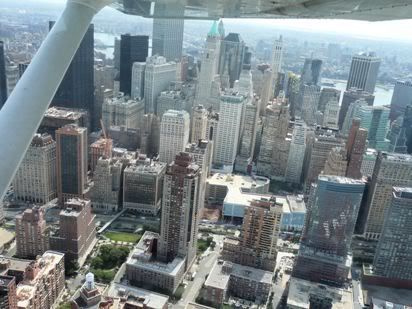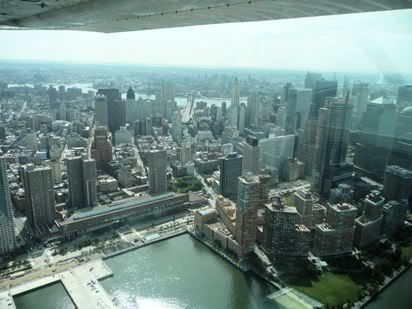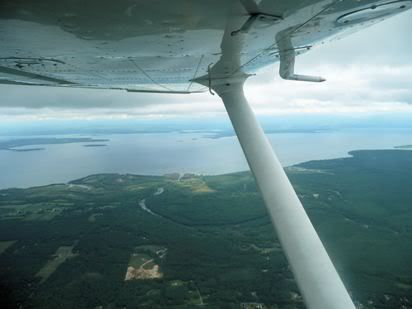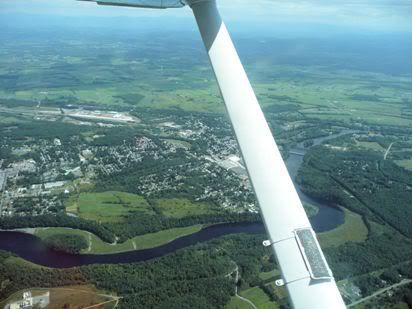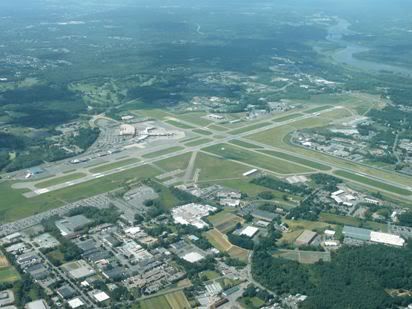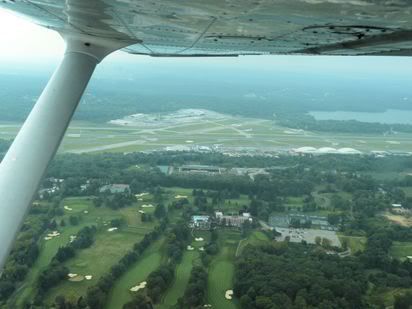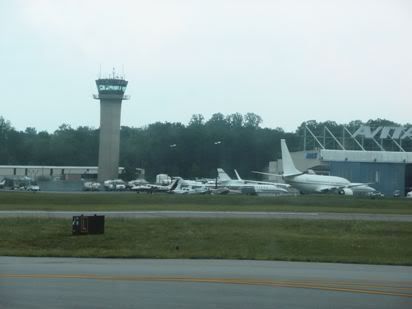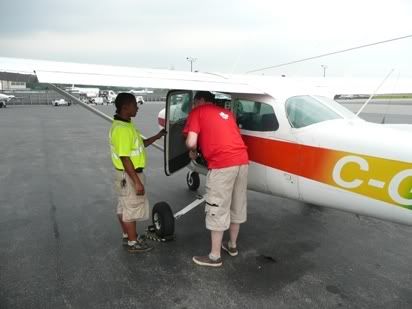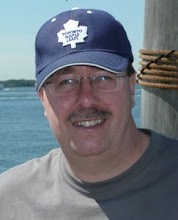Route: CYOW (Ottawa International) DCT KMSS (Massena)
Logged: 0.8 hrs
Fuel: 33.5 litres
This was the first, and the all important leg on the whole tour, as this was the leg where I had to clear US customs and the all-seeing and all-knowing ‘Homeland Security’! I had read up on this extensively and very carefully. The requirements are:
Before take-off- Call US customs 2 hours before arrival
- File a flight plan, get weather and NOTAMs
- Buy and display a US customs decal ($25)
- Complete and fax form CBP178 2 hours prior
In flight- Establish comms with US centre and get squawk before crossing border
After landing- Do NOT leave ther plane until state ETA has passed
- If customs don't show, call them and get clearance and badge number
The key thing here is that if you are a UK citizen, you MUST have a specific visa to cross the border in a light aircraft (i.e. you can’t do this on the visa waiver program). From my point of view they key point was that I am a Canadian citizen who lives (currently) permanently in the UK. So on the US Form 178, I recorded my citizenship, but of course put my UK address as my permanent address. I hoped this wouldn’t raise any eyebrows, but of course it did! So Brit pilots, please don’t try crossing from Canada to the USA in a light aircraft without a full visa!!
We turned up at the airport in plenty of time, as we needed two hours minimum notice for US Homeland Security. So first thing I did was to call Massena customs on the number I got. They didn’t want to know anything specific and merely gave me the number to fax the form to. This I did and got a printout of the transmission confirmation from the fax machine on the standard office practice basis that if you get this, you won’t need it, but if you don’t, they will deny receiving it! I know I am sounding paranoid about border crossing!
I then got Dan loading the aircraft up while I checked and liberated the documents required for international flight in both Canada and the USA from the flying club (they were very helpful and it was all nicely packaged up).
I entered details of my trip onto the impressive and all-embracing OFC computer system so they knew where I planned to be and when.
I trotted out to the plane and started a thorough A-check. It was already filled to the brim with fuel and the oil was full and looked new. I checked Dan’s loading (which was excellent). The plane was loaded, checked and complete, so Dan and I returned to the clubhouse for a coffee, while I tried the Canadian equivalent of WX-BRIEF for NOTAM’s, Weather and filing a flight plane.
I called 1-866-WXBRIEF. I was put automatically through to the Quebec region. I asked for the full set. There wasn’t much to say about either the weather or NOTAM’s as the day was good, with broken thin cumulus at 4000’. I filed the flight plan to start at 10:45 local (14:45 Zulu), giving us an easy 0:45 to get to Massena. Remember, it is vital that you arrive at your stated destination within 15 minutes of the stated time – hence my reason for choosing an airport in the USA that was just across the border, and therefore a very short flight – the further the airport and the longer the flight, the longer there is for winds, weather or whatever to interfere with your timings and to risk arrival outside of the half-hour window, thus incurring the wrath and full force of bureaucracy that only Homeland Security can deliver!
I have to say that this WX-BRIEF stuff is absolutely fantastic! Everything under one roof and you get to speak to a real person to boot – WOW!!!!
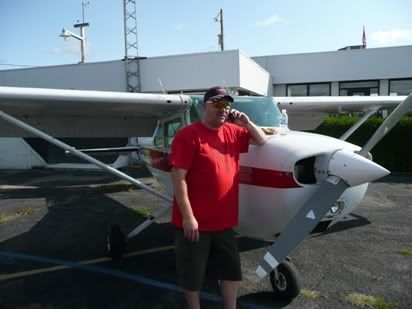
Just as I was about to mount up, we got a call on the mobile, first from Dan’s wife giving us a weather update (which she generally continued to do for every leg), then we got a phone call from Homeland Security. They spoke to me and said:
HS: ‘Can you please tell me your citizenship?’
Me: ‘Sure, Canadian as I put on the form’
HS: ‘But you put down a UK address’
Me: ‘Yes, I am a Canadian citizen, but I live in the UK’
HS: ‘I see (he didn’t)…..and you have proof that you are a Canadian citizen?’
Me: ‘Yes, a current Canadian passport’
HS: ‘I see (he didn’t)….British citizens must have a full visa to fly a light aircraft into the USA’
Me: ‘Uh….. yeah sure……, but I’m a Canadian citizen’
HS: ‘I see (he didn’t)….and you have DOCUMENTARY proof of this?’
Me: ‘Yes, a Canadian passport’
HS: ‘Do you have a Canadian pilots licence?’
Me: ‘Yes I do’
HS: ‘What is the number?’
Me: ‘I thought I put it on the form?’
HS: ‘No you didn’t’ (checking later it WAS clearly there)
Me: ‘My licence is XXXXXXXXXX’
HS: ‘I see…..well……that SHOULD be OK – have a nice day’
Well that takes the cake as the weirdest and most pointless phone call I have ever received in my life. The guys voice was humourless and robotic and reminded me of the immortal line in the Blues Brothers film where they announced ‘the use of deadly force has been authorised’. Oh boy, this Homeland Security stuff looks set to be fun – I can already hear the ‘whap’ of surgical latex gloves being donned prior to being given a body cavity search!
We mounted up at 10:30 as I worked my way carefully through the checklist. I picked up the ATIS. The winds had changed since yesterday (about 330 / 10) and they now vaguely favoured runway 22. I called Ottawa Ground on 121.90 who cleared me to taxi via taxiway papa to the holding point for runway 04. I completed the power checks and switched to Ottawa Tower on 118.80 and called ready for departure. I got immediate clearance with a right turnout onto track, not above 1500’.
So I switched everything on (i.e. GPS and Transponder), lined up and took off using a crosswind technique. Despite max fuel, two hefty guys and reasonable baggage, we are still 400lbs short of MAUW, to the plane took off quickly and easily. I climbed out and came onto track, which took us parallel to Ottawa International, so we managed to get some decent photos. Tower switched me to Ottawa TML on 127.70. I settled down into the cruise and leaned the mixture.

For this trip, I anticipated a basic VFR fit to any aircraft I hired, but was hoping for working VOR’s (which I got). I planned the entire trip generally around a combination of visual features and VOR’s. However, there was no DME. So what I did in advance was to programme all of the airfields and VOR’s into my old hand-held GPS (a Garmin Pilot III – no longer sold), which of course only had the European database on it. I also programmed in all of the routes and saved these. So I tinkered with the GPS to start the route while Dan held the plane steady.
Ottawa release me as I left their area, so I climbed to a modest 3000’ as I didn’t have far to go. I contacted Boston Centre on 135.25 who gave me the required squawk for border crossing. They didn’t pick up my squawk but said their coverage at that height in that area was normally not good. I wasn’t concerned about this other than for the legalities of border crossing. So I asked if I had their permission to cross the border. After a confusing conversation where they said they weren’t border security (I kinda figured that) I simply said that I was contacting them and getting a squawk as required by border crossing procedures. They confirmed as far as they were concerned, I was OK to cross and land at Massena.
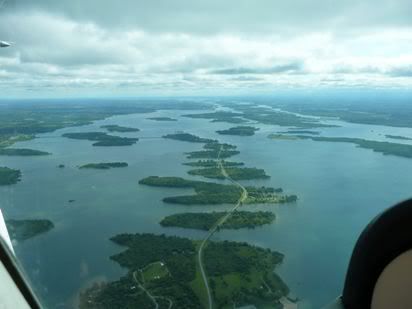
I was starting to stress myself out with this border crossing stuff – the flying is easy! We crossed the St Lawrence into American airspace and quickly spotted Massena airfield. I called on the required frequency of 123.00 but no reply. I was ready for this, so continued to give blind calls as I progressed around the circuit. I saw from the windsock that the winds favoured 05. So I swung around on a standard left had circuit to land. The first approach was too high (I cut it too soon onto base and final)so rather than try to sideslip it off on short final, I decided to go around – no hurry. Second approach was much better so I landed off this one.
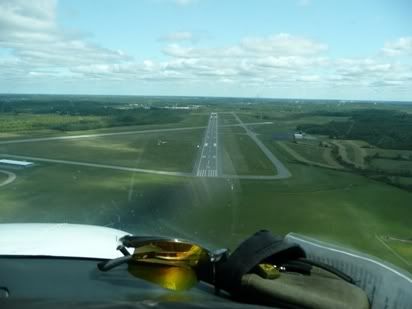
Still no reply from the radio, and a quick look around the airfield indicated building in two areas on opposite sides of the airfield – now where would Homeland Security be? I decided to taxi to the more formal looking building, which turned out to be the main terminal (deserted of course).
The time? Precisely the 11:30 I had advise customs about. Damn I’m good! We taxied in and shut down. Checked the time again (as you are not allowed to even open the door of the aircraft before the stated time unless instructed to do so by Homeland Security). Yep – 11:30 alright! We looked around for a car or people and spotted a 4X4 festooned with lights and an official looking colour scheme with two people sat in it glowering at us (well – I guessed they were glowering – it was hard to tell from 50m!).
As we shut down and sat there, they also sat in their car – I could almost hear the spaghetti western music start up and pictured the scene from ‘The good, the bad and the ugly’ where the three gunslingers eyed each other in the heat looking for who would make the first move! (Yes – I have waaaayyyy too much imagination). They walked towards the plane so we started to get out – and mighty ungainly I was as I caught my foot in the seat runner and nearly fell at the feet of the unsmiling lady officials!
My humorous ‘well, that’s a graceful way to make an entrance’ comment was greeted by stony silence and a rather silly ‘Is this you aircraft sir?’. To which of course all I could say was ‘No’ - well it went downhill after that! I decided at that point that you only answer their questions, don’t volunteer anything and don’t try to be funny.
HS1: ‘I see (they didn’t!), where did you rent it from’
Me: ‘Ottawa Flying Club …….in Ottawa (trying to restrain any trace of irony in my voice)’
HS1: ‘I see (they didn’t), and did you have their permission?’
Me: ‘Yes (no I stole it what do you think)’
HS1: ‘I see (they didn’t), do you have a renter’s agreement?
HS2: ‘They don’t have those in Canada (my God - this one talks too!)’
HS1: ‘I see (she didn’t), passports please’
I produced both mine and Dan’s passports. I also had my old cancelled one as it has a stamp of permanent residence for the UK that UK borders like to see.
HS1: ‘I want to see THAT one!’ (pointing at the cancelled passport I was putting away).
She glanced at the current passports and went through my cancelled passport with an electron microscope (OK I exaggerate, but not much!).
HS1: ‘Why are you in the USA?’
Me: ‘A three day flying tour, initially down to New York to see my sister’
HS1: ‘What is your pilot licence number’
Me: ‘I did put it on the form, but it is XXXXXXX’
HS1: ‘It wasn’t on the form (oh yes it was!!!)’
Me: ‘I see (I didn’t)’
HS1: ‘How do you know each other?’
Dan: ‘I was posted to the UK for three years where I met Steve’ (I was glad Dan jumped in as I was about to answer ‘very well actually’).
HS1: ‘I see (she didn’t), do you have military ID (looking at Dan)’
Dan: ‘Yes, this is my warrant card’
HS1: ‘I see (she didn’t), and are you still in the military (looking doubtfully at Dan’s impressive 6’2” and 250lb frame)?’
Dan: ‘Yes (If I weren’t in the military would I have a current card)’
HS1: ‘I see (she didn’t), what rank are you?’
Dan: ‘Warrant Officer (not called this in the US military so you wouldn’t know)’
HS1: 'I see errrrr.....'
She didn’t – looks hesitantly at HS2 – they look at each other then back at us – stood there like idiots in matching bright red t-shirts that say ‘Puck off – I’m Canadian’.
HS2: ‘Enjoy your visit – have a nice day (not meaning a single word of it)’
As they stalked off back to their own personal ozone-hole-creating V8 4X4 and roared off back to presumably the Men In Black HQ.
WELL! If I thought my first encounter with Homeland Security was weird, this one took the biscuit. If it weren’t so serious in intent, it would have been the most hilarious thing I have ever been through. But my advice is keep a straight face and answer their questions, no matter how stupid and even when they get their fact wrong, they are still right. It does strike me that it is the usual government thing though – the all important appearance of being seen to be doing something no matter how much it ignores the real threat or how ineffective it is – tighten up on the easy and obvious!
Wow! Major sigh of relief as we explore the deserted terminal. Someone drives across from the other side of the airfield on their way out and we ask about fuel and flight planning. He is very helpful and friendly and points us at the hangars on the other side of the airfield, so we mount up, start up and taxi across.
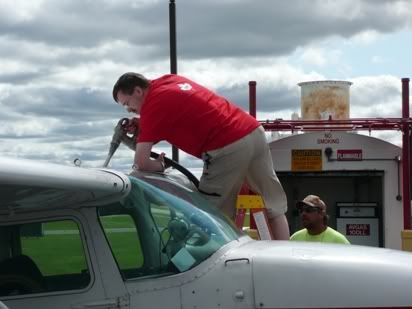
Well that’s the first leg over and I have to say I found it incredibly stressful, not because of the flying (that was easy), but because of the border crossing routine. Well, it will be easier from this point on I hope and I guess border security people aren’t the friendliest people in the world in any country (actually that’s a lie as I find the UK guys very good and friendly, even cracking jokes about the weather).
Well, we are in the USA now and all set to get prepped again and head to New York.
